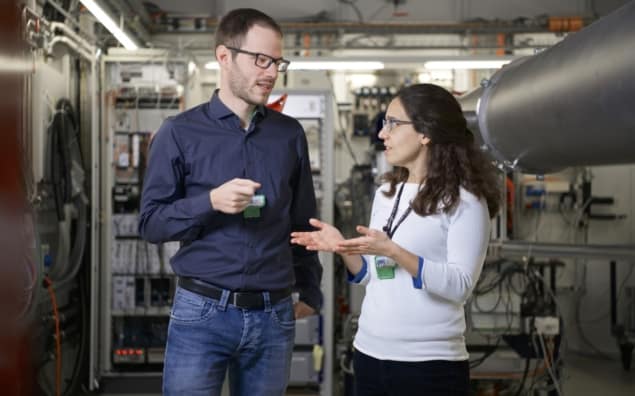
A new computational imaging technique promises to improve the resolution of transmission X-ray microscopy (TXM). Fourier ptychography, in which the objective is moved during acquisition, was developed for use at visible wavelengths in the last few years. Now, researchers at the Paul Scherrer Institute (PSI) and ETH Zürich in Switzerland have demonstrated a variation that works with X-rays, providing quantitative phase- and absorption-contrast images at high resolution. The method will allow biological samples to be studied in more detail than is currently possible (Science Advances 10.1126/sciadv.aav0282).
Given a perfect set of optical components, the resolution of an imaging system is limited by the wavelength of the light being gathered. X-rays, then, with wavelengths orders of magnitude shorter than visible light, should allow for images hundreds of times sharper than those produced using optical microscopes. The problem is, X-ray optical components are far from perfect.
One of the sources of compromise in X-ray optics is the objective lens, which focuses light from the target onto the detector. An ideal lens for high-resolution imaging is one with a large numerical aperture, meaning that it captures light over a large angle of incidence. Because X-rays are not refracted significantly by any known material, X-ray optics has no direct equivalent to the glass lens used to focus light in visible-light microscopy.
Simulated objective
Instead of refracting lenses, X-ray microscopes are commonly built around a Fresnel zone plate (FZP), which focuses radiation by diffraction. PSI’s Klaus Wakonig, and colleagues at PSI and ETH Zürich, used just such a device, but they moved the FZP parallel to the imaging plane between acquisitions. This let the researchers sample a much greater portion of the diffracted beam, so when they reconstructed an image from the separate measurements, it was as if they had used a physical objective with a much larger numerical aperture.

Although the researchers’ demonstration used coherent X-rays from a synchrotron, they think the same benefits could be realised by making quite simple modifications to existing TXM sources. “This is at the core of our current research interests: how to relax conditions of stability, beam manipulation and coherence such that Fourier ptychography may become applicable at a wider range of instruments?” says Andreas Menzel, the project’s principal investigator.
One aspect that the researchers are confident of improving is the speed of the process. At the moment, reconstructing a given image requires more than a hundred separate acquisitions of a few seconds each, with the objective and detector moved every time.
“Indeed, Fourier ptychography is commonly slower than other full-field imaging techniques,” says Menzel. “However, larger detectors are currently being developed which will enable us to keep the detector at the same position. Due to the small scan range and the low weight of FZPs, the remaining scan can be orders of magnitude faster.”
Biological applications
If current TXM apparatus can be adapted to use X-ray Fourier ptychography, even modestly equipped laboratories could be given a significant new capability. Biological materials typically vary little in how strongly they absorb X-rays, so images can fail to reveal important structural details. The phase of transmitted radiation, on the other hand, is much more sensitive to differences in composition, meaning phase-contrast images can show features too subtle for standard TXM to capture.
Another advantage that makes the technique particularly suited to biological contexts is the relatively small amount of radiation that it delivers to the sample. “X-rays have the tendency to destroy the very structures that you’re interested in imaging,” says Menzel. “But in our experiments, the improvement beyond standard TXM came with a virtually indiscernible increase in required radiation.”
This ability to image delicate structures at high resolution would be invaluable in studying radiation-sensitive samples like tissues and cell cultures, and could yield insights into any number of disorders, from cancer to Alzheimer’s disease.



